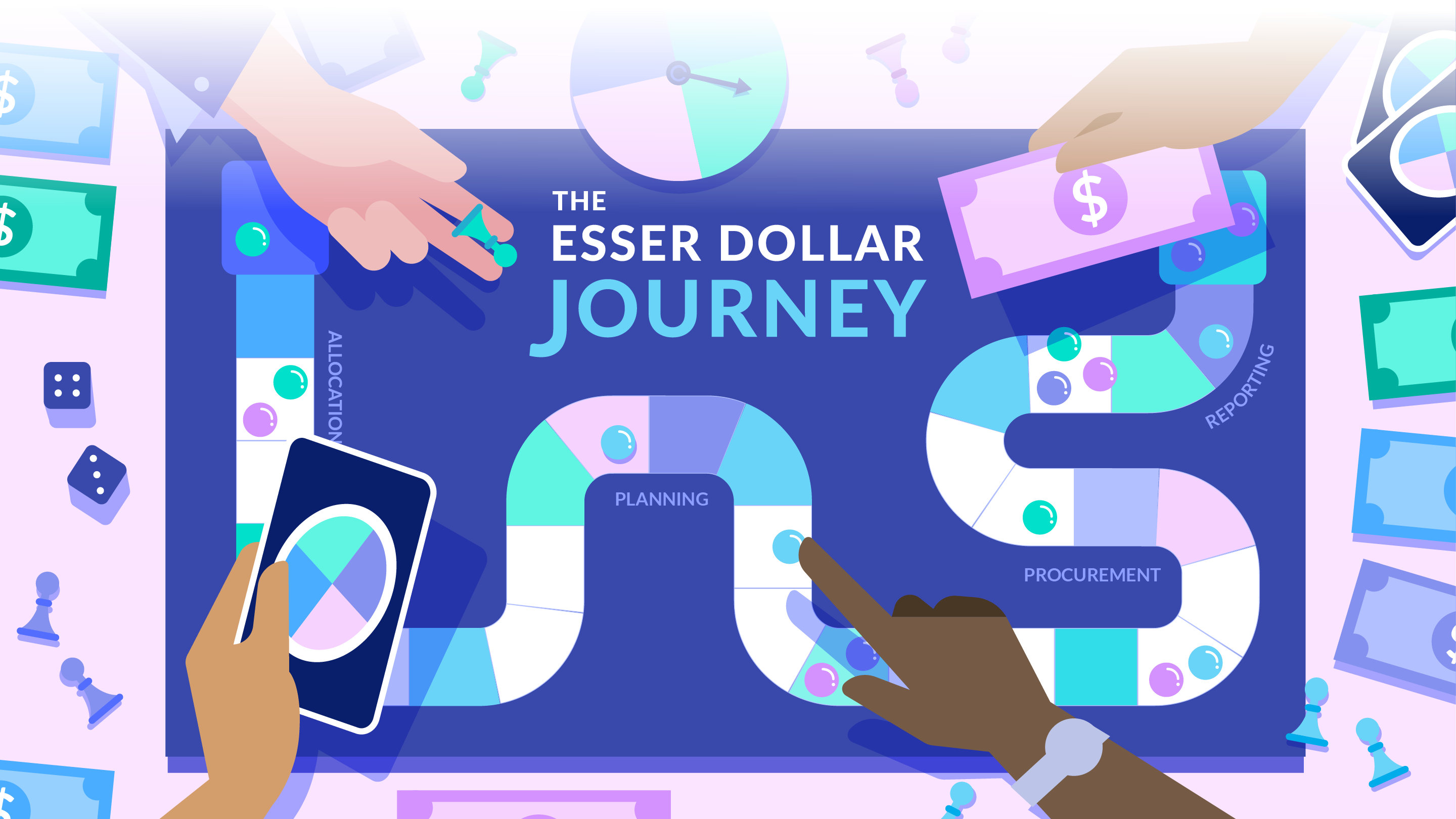
Dollars to Dashboards
How districts can craft a winning strategy to combat ESSER misconceptions
The U.S. K-12 education system received three rounds of pandemic-relief stimulus funds through the Elementary and Secondary School Emergency Relief Fund (ESSER I, II, and III), totaling nearly $200 billion. The complexities inherent in receiving and spending ESSER funds, along with headlines and reports questioning how districts are spending these grants, have resulted in public confusion and mistrust about the mechanics and use of these critical federal funds.
“The money’s not being spent!” … Fact or Fiction?
One persistent idea that’s taken hold among the public is that districts are not spending their ESSER dollars wisely—or at all.
Headline after headline has announced that districts received an historic infusion of federal funding to help mitigate and compensate for the toll the COVID-19 pandemic took on schools and students. Casual observers might be forgiven for expecting dramatic changes to schools’ programming, infrastructure, or methods. In reality, the amount of money, while substantial, is a relatively small percentage of what districts spend, particularly when stretched across the full ESSER grant period, which lasts through September 2024.
ESSER funding involves multiple challenging steps for districts to navigate; communicating these complex processes to the public adds yet another hurdle for districts to clear. The public is receiving mixed messages on ESSER dollars from social media and national news sources, and local stakeholders will likely have questions about what districts are doing with their stimulus funding.
The Name Game
What does it mean when dollars are spent? The answer can take many forms, from building a plan for spending priorities to identifying a vendor, signing a contract, completing year-end reporting, issuing reimbursements, or paying a new vendor or employee. Spent dollars can refer to a planned expense, an approved budget, the cost of a contract, an annual cost, spending to date, or monthly costs.
Consider these examples:
1. A 3-year tutoring contract that costs $3M in total, but is paid out in $1M installments each year.
2. A new counselor—whose salary and benefits cost $75,000 per year—in a district that issues payroll from ESSER III funds at $6,250 per month for three and a half years, then switches to being paid out of General Funds. This means that $262,500 was obligated with ESSER III funds, but only $37,500 has been spent on the counselor's pay and none of it has been reported yet (aside from the plan to invest in counselors).
In both of these cases, the amount of money changes significantly depending on the different meanings of spent.
In K-12 finance, the word "spent" can have many definitions. This makes it difficult to communicate the status of ESSER spending with communities.
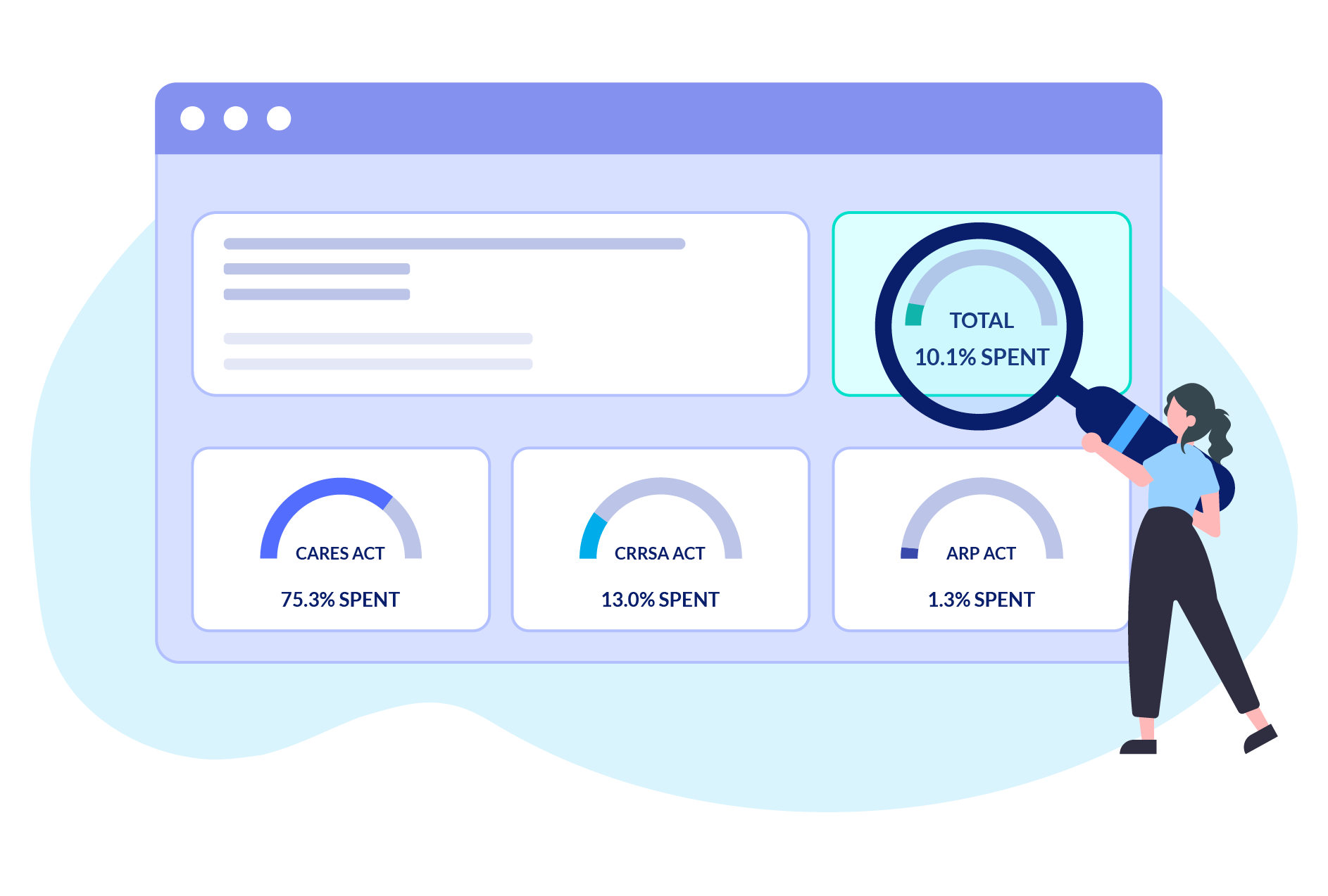
Because the federal transparency portal reflects only reported spending in broad categories, the public is left to wonder why so many dollars have yet to be used. ("It's nearly year three and the district has only spent 10% of ESSER funding? Why?!")
Show Me the Money
To provide public transparency about how ESSER dollars are being utilized, the U.S. Education Department (USED) published an ESSER portal that shows the percent of each grant that has been spent and reported by state.
The dashboard reflects that states have reported spending less than half of their ESSER funding—in reality, states have planned, spent, or obligated a larger share of ESSER funding than they have yet reported to the USED. The “percent spent” indicator on the USED ESSER dashboard only reflects the dollars that have traveled the long multi-step journey from legislation to reporting, breeding confusion about the funding that has not yet reached the final “reporting” stage.
THE FEDERAL ESSER DASHBOARD HAS THREE UNIQUE CHALLENGES:
1. The funding can be spent over multiple fiscal years (with two and a half eligible years remaining).
2. States have different processes and timelines for allocating dollars, reimbursements, and submissions.
3. With no national accounting structure for categorizing funds, initial spending reports lack detail beyond fund-source at the federal reporting level.
So where are all the ESSER funds?
The Game of Life: ESSER Edition
The big myth that “the money’s not being spent” and uncertainty around where the dollars have gone stems from the long journey that stimulus dollars take to get from legislation to reporting. This prevalent misperception that funds aren't being utilized creates challenges for districts in terms of communicating and building trust with communities. Understanding common sources of confusion throughout these steps can equip districts to better explain their ESSER budget plans and spending with stakeholders.
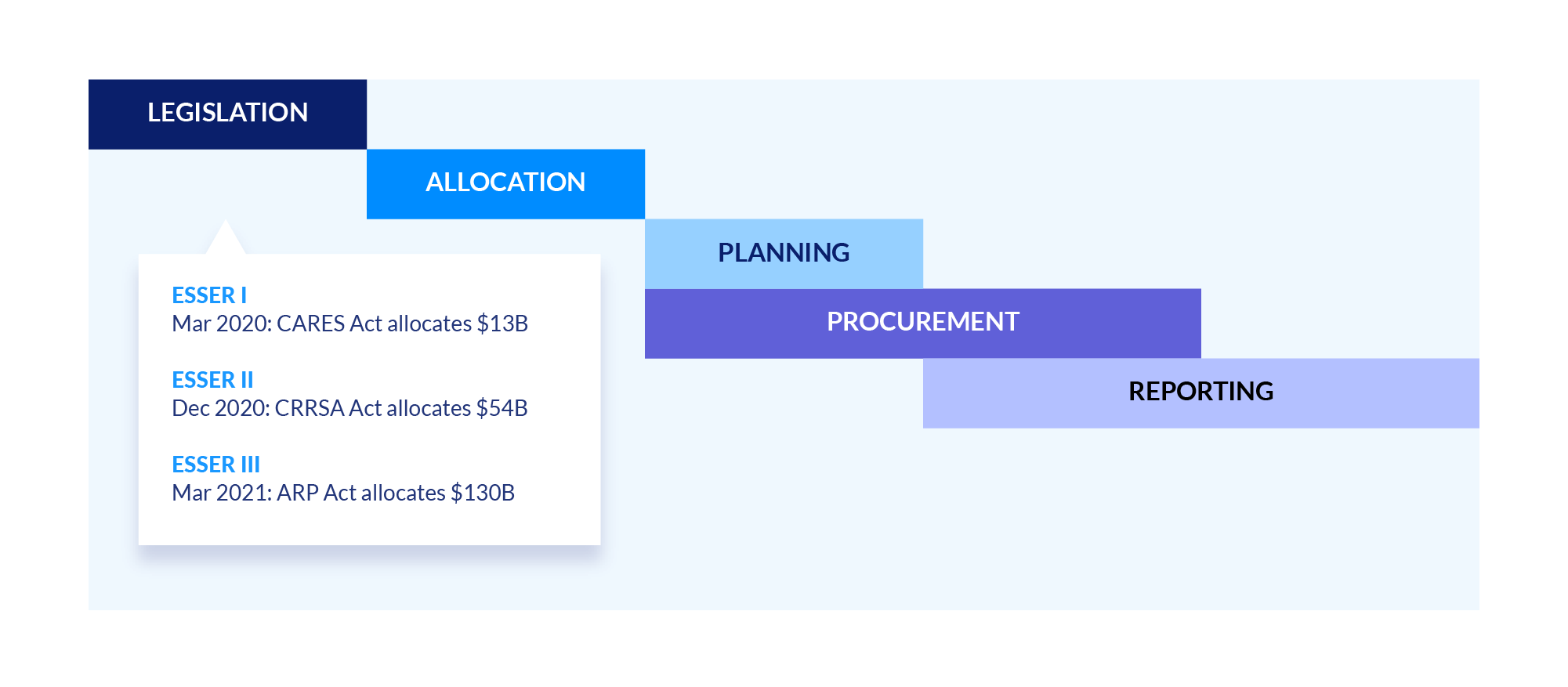
Before ESSER funds are reflected on the USED ESSER transparency portal, they must first pass through stages of financial management that include legislation, allocation, planning, and procurement. Most activity happens "behind-the-scenes" and the timelines and requirements often differ state by state. There are many opportunities for misconceptions in the public along the way.
Step 1: Legislation
Congress passed ESSER I in March of 2020, ESSER II in December of 2020, and ESSER III in March of 2021. All of the stimulus funds across legislative packages are referred to as ESSER funds—tranches one, two, and three. These dollars are allocated based on Title I proportionate share. The total stimulus is about a 6% supplement to all K-12 spending over the 4.5- year term of the grants.
Districts didn’t receive the ESSER money they were allocated immediately after Congress approved each wave of ESSER: passing the federal legislation for each ESSER fund set in motion a series of steps that involved districts, states, and the federal government.
On average, stimulus funding works out to about $3,850 per-pupil which can be spent over the four-and-a-half year grant period, potentially crossing six fiscal years. Per-pupil values are rounded averages and highly depend on a district's concentration of poverty.
Step 2: Allocation
The steps to the approval and release of ESSER funding puts states on different timelines for distributing their ESSER dollars. The upshot is that some districts received and spent their ESSER money fairly quickly, while others saw much longer delays. After the passage of ARP/ESSER III in Fall 2021, the Education Department required state education agencies (SEAs) to submit plans for their ESSER dollars to the U.S. Department of Education in order to receive the final third of ARP funds. Once the USED approved SEAs’ plans, it was up to SEAs to decide how they would tactically distribute funds to local education agencies (districts or charter LEAs).
In some states, like Massachusetts, SEAs release ESSER funds directly to districts who then report their spending back to the SEA (top line flow chart below). In Rhode Island, the SEA reimburses districts for qualified spending with ESSER dollars (bottom line flow chart below). Why is this difference important for data reporting? Choosing to reimburse qualified spending rather than directly releasing funds to districts will increase the wait between when districts use money and the federal government reports spending. Districts in Rhode Island may have bought masks in September 2021, submitted those expenses for reimbursement once they were delivered in late October, received state approval for reimbursement in December, and actually received the reimbursement in January. Only at this final step (four months after the purchase) would Rhode Island report these dollars as spent.

States utilize different distribution methods to send ESSER funds from the state level down to districts. Some districts receive funds and report spending back to states (top). Others submit spending for reimbursement (bottom). Different methodologies across states create inconsistencies in the timing of expense reporting for ESSER spending at the federal level.
Fund Fact
ESSER dollars were received in installments (and some have yet to be received).
Districts did not receive ESSER money all at once— funding came in installments that significantly lagged behind the legislation dates. What’s more, a large portion of ESSER I and II spending happened before (or concurrently with) the approval of these dollars.
ESSER I (Summer 2020): Districts used ESSER I dollars to reimburse emergency expenditures from the spring of 2020 to provide students with tools and devices for online learning, to ensure students could continue to receive school meals, and to avoid mass layoffs as traditional revenue sources became unstable.
ESSER II (Winter-Spring 2021): According to firsthand superintendent and CFO reports, ESSER II dollars were primarily used to reopen schools with extra safety measures, rollout testing programs, implement hybrid instruction, initiate learning recovery programs, and make improvements for air quality and sanitation.
ESSER III (Fall 2021-March 2022): Both the largest infusion of funding and the last to be passed by Congress, ESSER III is potentially the greatest source of confusion. Many districts are still in the process of planning how they will allocate these funds because they did not receive ESSER III funding until early 2022— nearly a year after the American Rescue Plan (ARP) was passed. As of March 2022, some districts we spoke to were still awaiting receipt of ESSER III funds.
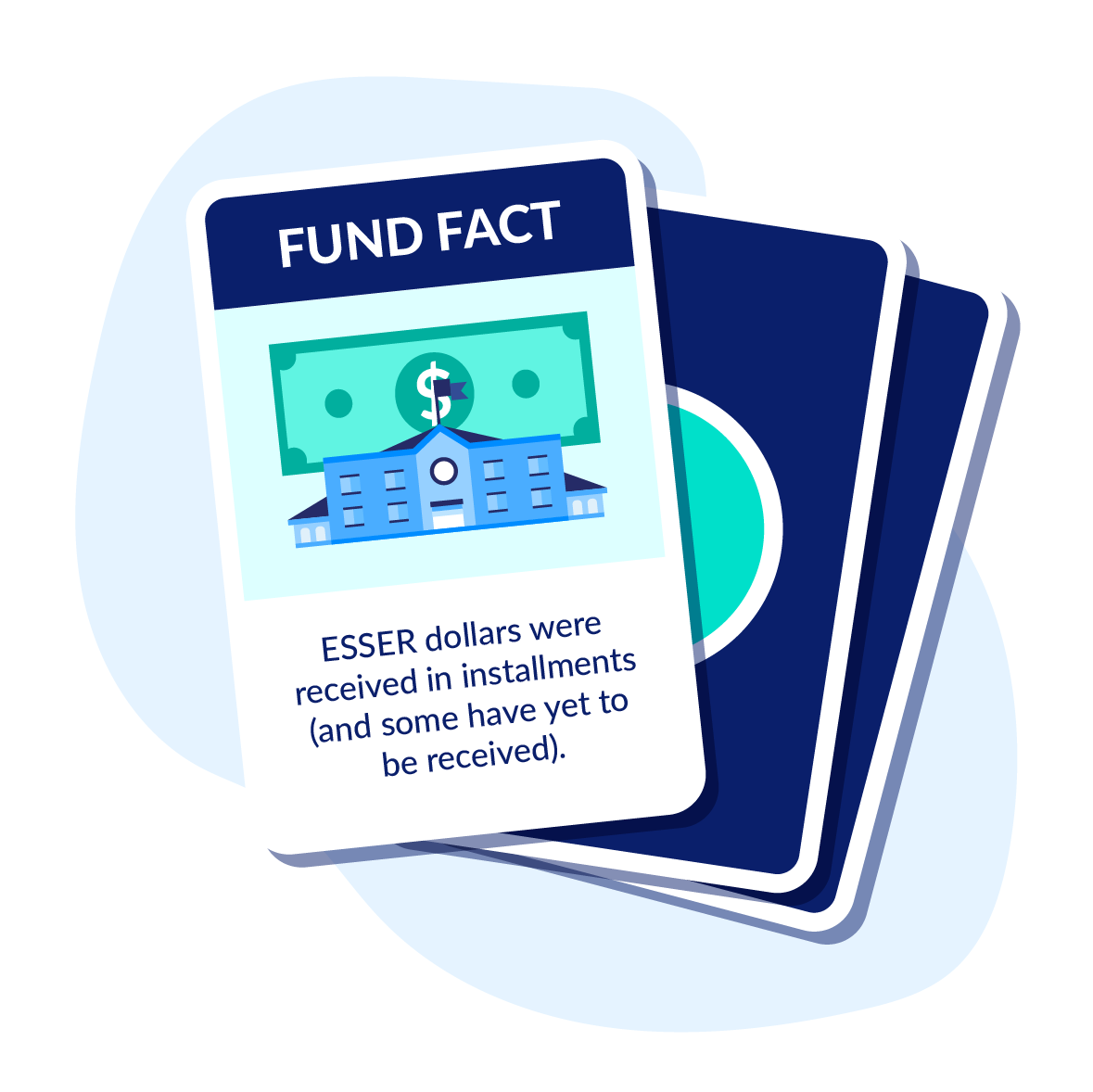
![]() The first flow of ESSER I dollars went to things like access to technology that would enable students to navigate the virtual space. Another chunk of money went to food service, materials, and support. About 90% of these dollars are already spent. With ESSER II, we only have about 40% of that spent or encumbered and a large portion went to COVID testing which enabled us to get back into buildings. We’re feeling pretty good about our pace of spending, particularly if you mark when the money actually landed in districts to spend.” (February 2022)
The first flow of ESSER I dollars went to things like access to technology that would enable students to navigate the virtual space. Another chunk of money went to food service, materials, and support. About 90% of these dollars are already spent. With ESSER II, we only have about 40% of that spent or encumbered and a large portion went to COVID testing which enabled us to get back into buildings. We’re feeling pretty good about our pace of spending, particularly if you mark when the money actually landed in districts to spend.” (February 2022)

Dr. Sonja Santelises, CEO,
Baltimore City Public Schools
ESSER spending is actually more flexible than other pots of federal funding in a district’s budget. ESSER funds are like “wild card” dollars because districts can spend them so many different ways.
Step 3: Planning
Dealing with ESSER dollars becomes yet more complicated as districts plan for how they will spend funds. Overall, there is a lot of flexibility in how districts can spend ESSER funds, which means that districts can be both nuanced and targeted in addressing schools’ and students’ needs. These planning processes, necessary to be good stewards of ESSER dollars, can be quite involved. Districts must balance spending on immediate needs against multi-year investments that address the longer-term impacts of COVID. Immediate needs include the protective equipment, meals, technology devices, internet connectivity, and virtual learning tools that were crucial investments for districts in the early stages of the pandemic. Long-term initiatives address student well-being and emotional health, improving school facilities, and learning remediation. Using dollars well often means incorporating non-immediate spending into the annual district budget, trading some immediacy for intentionality.
Fund Fact
ESSER dollars amount to only a small percentage of a district’s annual spending.
While ESSER funds were substantial, on average they amounted to only a small percentage of districts’ annual operating budgets when funds are spread out over the lifetime of the grant. The amounts districts received varied because ESSER funding was allocated according to Title I rules rather than divided evenly across districts.
ESSER funds amount to roughly $3,850 per pupil across the U.S over a four-and-a-half year period between March 2020 and September 2024—less than 6% of what most districts spend on students in any year of the grant cycle. And, because a sizable portion of this money went to crisis mitigation early on—investing in technologies for remote learning and safety measures for staff and students who remained in person—much of that money is already spoken for.
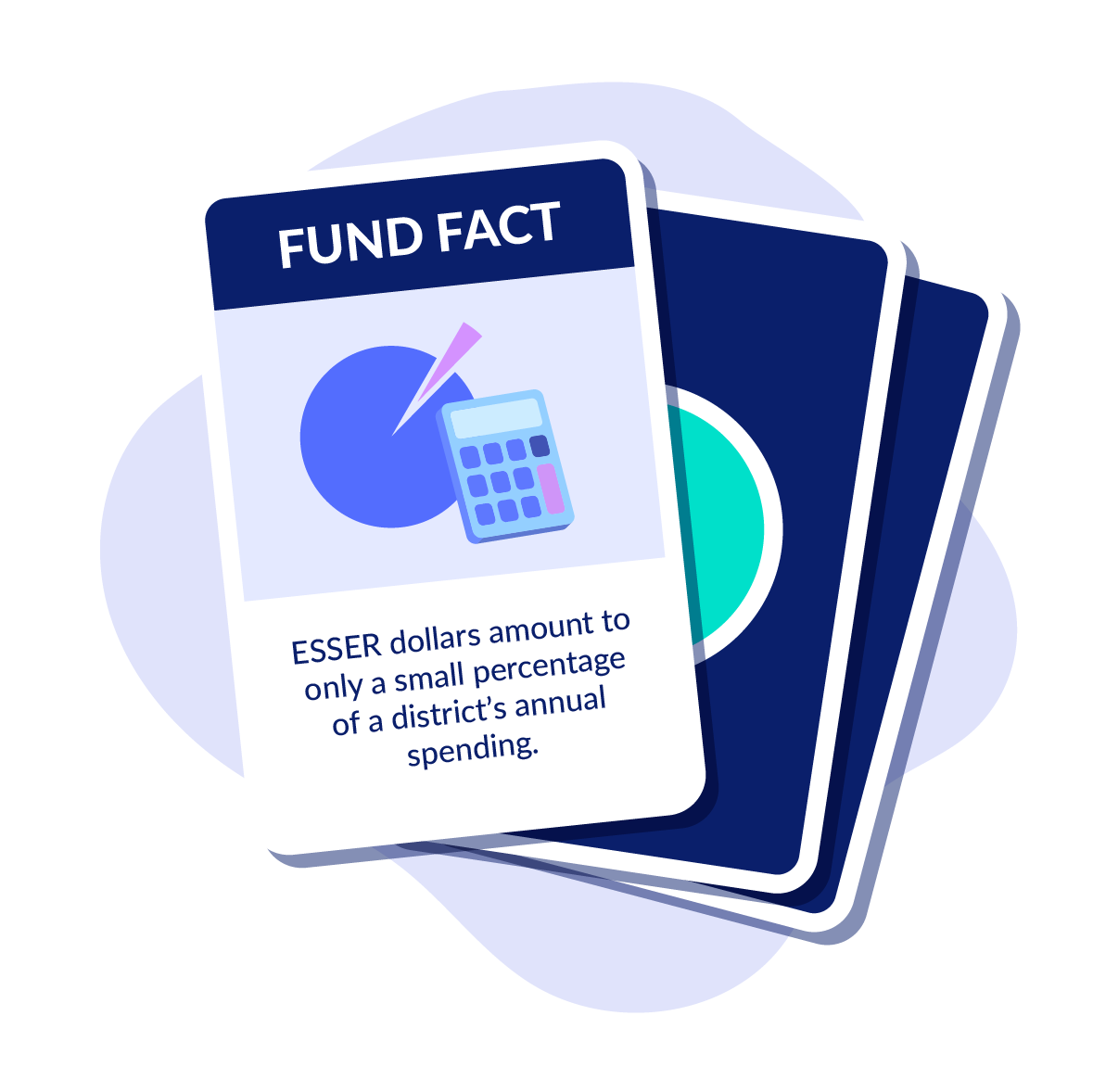
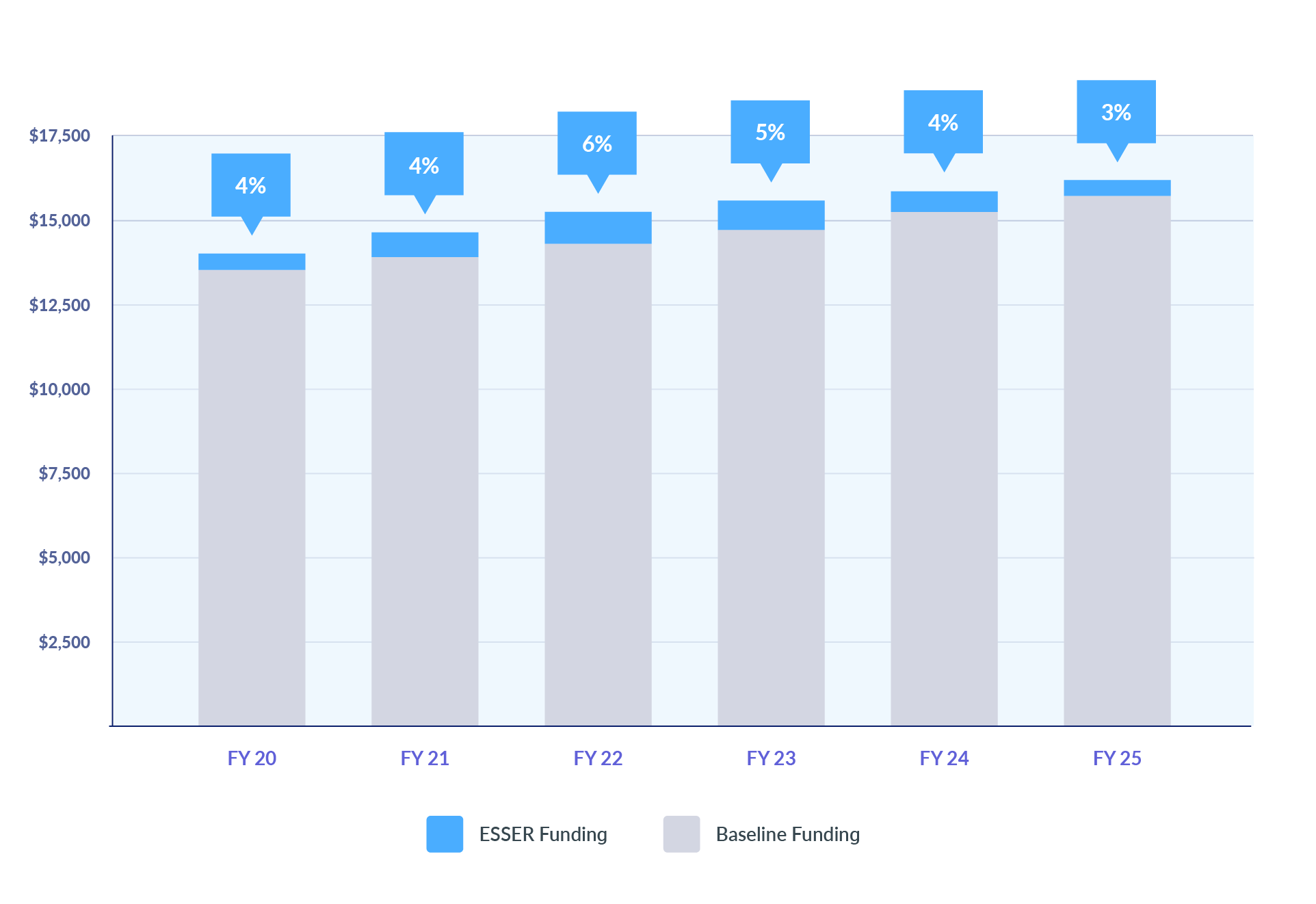
In this example based on national averages and ESSER funding approximations, the district's ESSER funding amounts to only a small percentage of its baseline funding across the allowable spending period for ESSER funds. On average, if a district spreads out its ESSER dollars over the duration of the grant, the district hardly receives an additional $800 per-pupil on any single year. For districts that are chronically underfunded by 20-30% annually, stimulus funding is not a staggering supplement to baseline funding.
Step 4: Procurement
Once funds are planned, the next complication arises: procuring staff, supplies, and programming. This process has become rife with new, unforeseen stumbling blocks—labor supply has been low for important staffing needs like school counselors and nurses, instructional resources must be vetted for efficacy, teacher retention patterns have been unsteady, and supply chains have made physical goods difficult to procure.
During procurement, districts are busy with contract negotiations, recruitment, reporting, and reimbursement processes. Steps may include:
- Identifying partners or posting job descriptions for supplemental programming and staffing needs.
- Signing partner contracts and/or making hires upon successful procurement and recruitment/hiring process.
- Issuing Purchase Orders, processing checks, and running payroll in accordance with partner contracts and staff agreements.
- Submitting contracts and other information to state agencies for reimbursement of approved expenses.

Procuring resources with ESSER funds is a multi-step process that can play out over many months (sometimes years)! During this time, dollars flow from being budgeted, to being encumbered, and ultimately to being spent.
BUT WAIT ... HAVEN'T WE BEEN DEALING WITH STAFFING SHORTAGES FOR AGES?
Yes! For decades, declining enrollment in teacher and counselor preparation programs have created persistent vacancies in K-12 education that long predate the pandemic. The industry has seen relatively flat wage growth compared to other professions requiring similar levels of education. What’s more, competition for workers is fiercer than ever as more industries have embraced remote work. These macroeconomic trends are exacerbated by the substitute shortages and early retirements that dominate the headlines. Throughout the country, districts may be trying to use ESSER funds to plan new positions for a labor supply that doesn’t exist. Solving widespread staffing shortages will require solutions for both the micro and macroeconomic trends at play.
In the meantime, districts should be careful to recover or cancel vacancies in staffing plans within 3-6 months. When districts budget dollars for positions that don’t get filled, they accumulate vacancy savings which are at high risk of being wasted by spending rapidly against grant deadlines or returning expiring grant dollars. Instead, districts should monitor vacancies and have a “Plan B” for how to redirect those dollars to their next best use.
Step 5: Reporting
The reporting aspect of ESSER spending is like the childhood game of “telephone” gone wrong— the story of where the money is going gets lost in translation. At one end of the line, there are districts with a mountain of accounting data: they can pinpoint to the penny which grant dollars were spent in which categories and on what; they can provide the check number, program code, budget category, and vendor details. But as this information travels to the state and federal levels, the detail is lost and summed up in an amorphous blob for each grant in the USED ESSER portal—which explains some of the confusion among the public and in the media.
The 10,000 account codes in districts’ accounting systems and the three gigantic buckets of money reported on the USED ESSER portal are the most and least amount of information to convey about ESSER spending—both of which are confusing and neither of which are useful. The appropriate level of detail for the public lies somewhere between these two extremes. They need enough information to gain a sense of what is planned for ESSER dollars, but not so much that the story gets lost in a deluge of detail. Showing the amount of spending planned for each strategic priority—we recommend having 5-10 categories—provides a useful level of information for public finance transparency.
Somewhere between broad grant categories and granular accounting data lies appropriate level of expense reporting for public communications. Typically, stakeholders can effectively digest information about planned spending for 5-10 strategic priorities.
![]() I think what folks need to understand is that we really tried to balance meeting basic needs with these dollars while also being incredibly strategic and mission-driven so we see an impact on student learning. Ultimately, I believe that’s what the public expects to see from this investment of dollars and we have a responsibility to show them that." (February 2022)
I think what folks need to understand is that we really tried to balance meeting basic needs with these dollars while also being incredibly strategic and mission-driven so we see an impact on student learning. Ultimately, I believe that’s what the public expects to see from this investment of dollars and we have a responsibility to show them that." (February 2022)

Dr. Susan Enfield, Superintendent,
Highline Public Schools
A Winning Strategy for ESSER Transparency
Your district has a plan, but it can be challenging to share it with the community. While the public will look to the USED ESSER Reporting Dashboard, they’ll turn to the district to reveal the missing pieces. Understanding the common areas of confusion can help equip your district to explain ESSER spending and budget plans clearly for stakeholders.
1. Illustrate the Fund Management Timeline
Timelines and procedural steps are a real source of confusion for communities. Consider making an infographic to outline your district’s timeline for receiving, planning, and spending ESSER dollars (you can even use this image from this article!)—starting with the planned allocations and ending at reimbursement and/or reporting. Share a specific example to contextualize the timeline and build an understanding of what it takes to plan large sums of money. If possible, show how much of your total funding is in each step of the process (spent in prior years, budgeted for current year, or planned for future years).
2. Show the Multi-Year Plan with Per-Pupil Spending
In the case of a multi-year grant like ESSER, it’s also important to show a multi-year budget plan through the duration of the grant to allay concerns about the rate of spending. Break out per-pupil and absolute dollar amounts by year and by fund category to show how you plan to spend these dollars over the term of the grant. This will make the total dollar amounts look smaller—because they are smaller, when contextualized: “I know $37M sounds like a lot of money, but we’re actually talking about $600 per student per year.” This type of explanation goes a long way to help communities understand the plan and your district’s intentions to make the dollars as impactful as possible.
This sample multi-year plan plots planned per-pupil spending, broken out by ESSER fund, across the grant term. Showing how spending per pupil stretches over the full grant term illustrates that what might be a large lump sum amounts to less money than we might expect. The inflation line shows how careful planning can account for inflation growth. If an ESSER-funded program is particularly successful, districts can build this into their permanent operating budgets by carefully planning their ESSER dollars over the coming years.
3. Summarize Expense Reporting Categories to Key Priorities
When sharing financial information with the general public, too much accounting detail creates a volume of data that is difficult to synthesize, but too little data at the total grant level leaves people wanting more information about how—and whether—dollars are spent. It’s about finding the middle ground, or the "Goldilocks" number of categories that is just right for building understanding without losing sight of the big picture. The ideal financial transparency effort will group budgets and spending in a manageable number (5-10) of key priorities areas or strategic initiatives in plain language. In the case of ESSER dollars, the state priorities in the approved ESSER III plan might provide a good starting point for how to organize and label spending initiatives. Maybe your priorities will center on culture and climate, school facilities, or supplemental instruction and remediation. Bucket those expenditures and show how you’re going to spend them through a multi-year plan.
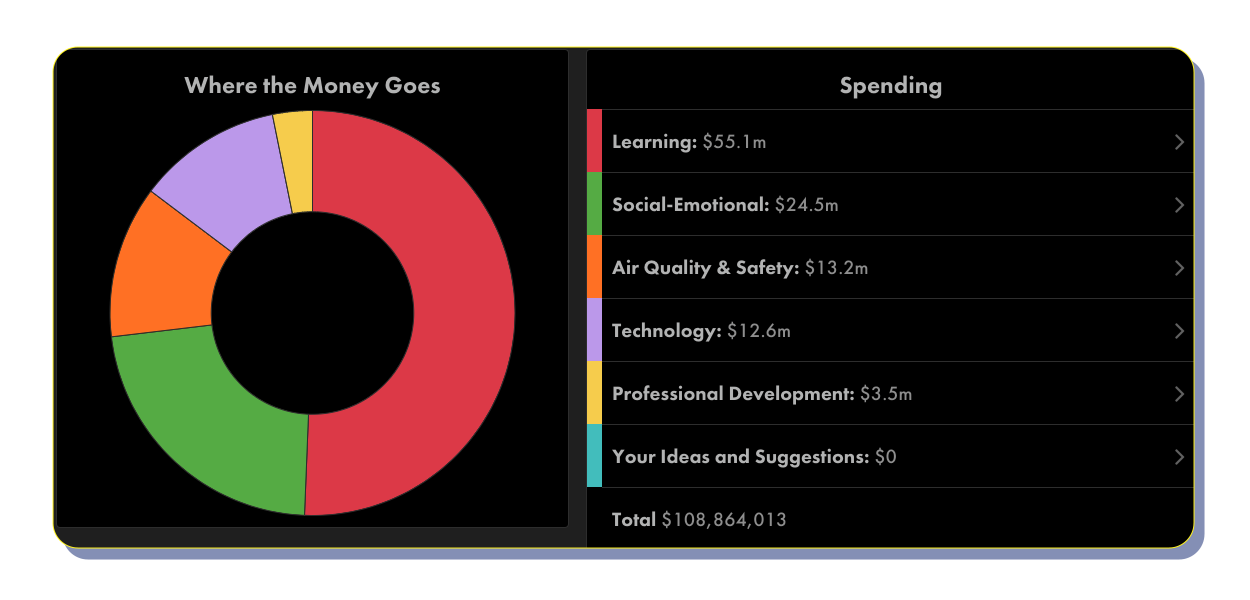
In this example from the Syracuse City School District, the district is using a budget engagement platform to share information and solicit feedback on planned spending. The spending plan referenced here is specifically for ESSER III funds. Spending is shown across five categories including learning, social-emotional development, air quality and safety, technology, and professional development.
Explore More ESSER Resources
Dive into resources by Allovue to learn more about ESSER spending and the intersection of finance operations and resource equity. You can also enroll in The Allovue Ledger, our monthly email, below. Stay up-to-date with everything you need to know to improve your district's financial management habits. Get tips on district budgeting, tracking district-wide spending, communicating with stakeholders, and more!

Pivoting to Equity-Based Budgeting Using ESSER Funds

Strategic Stimulus Spending | ABCs of I, II, III

"I don’t see what school finance has to do with equity."

Pivoting to Equity-Based Budgeting Using ESSER Funds

Strategic Stimulus Spending | ABCs of I, II, III

"I don’t see what school finance has to do with equity."
Meet the Contributors
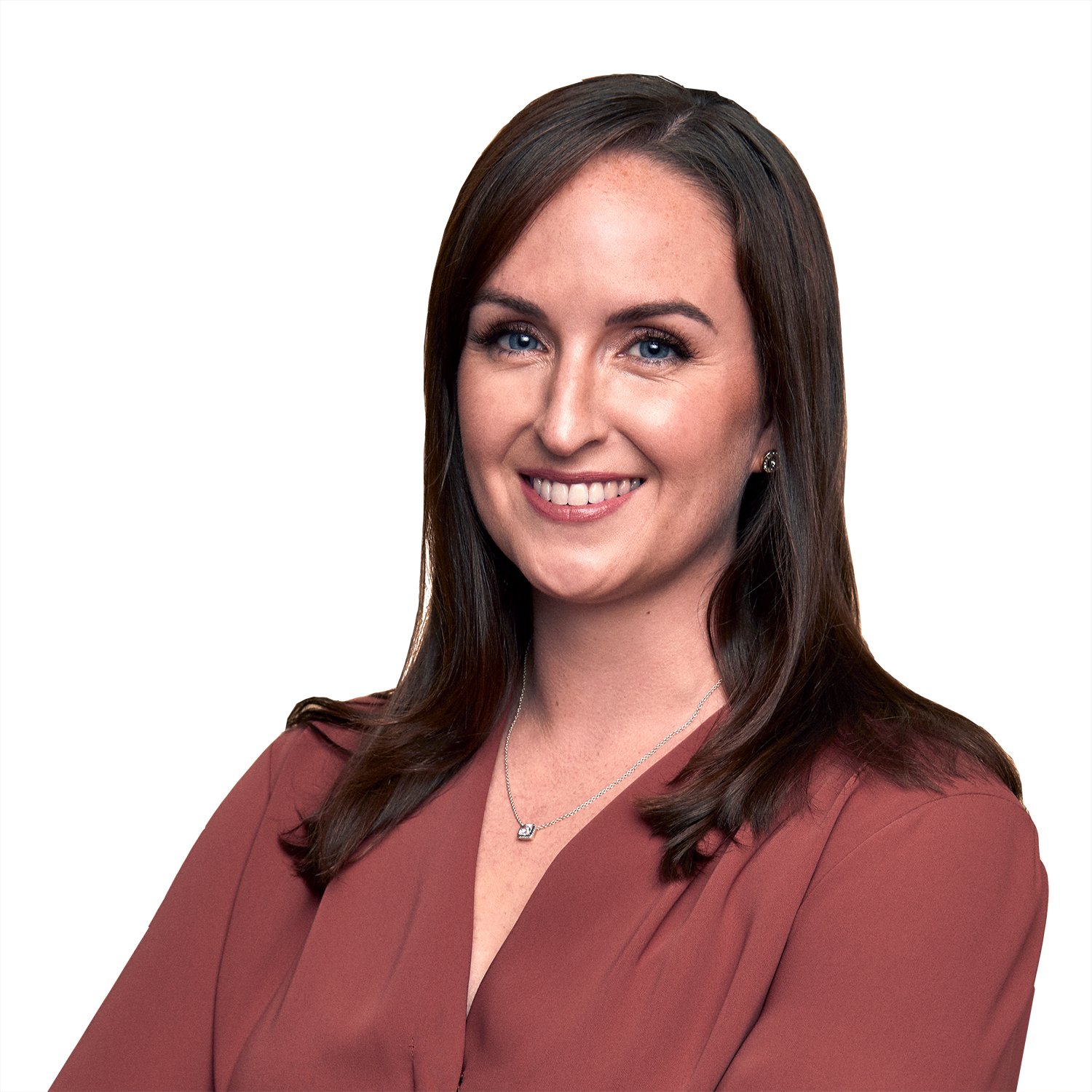
Jess Gartner
Founder & CEO
Before founding Allovue, Jess studied education policy at the University of Pennsylvania and taught middle school humanities in Baltimore City. Jess has been featured as one of Forbes Magazine’s 30 Under 30 in Education, The Baltimore Sun’s Women to Watch, and Baltimore Magazine’s 40 Under 40. In 2014, she was recognized as the Maryland Smart CEO Innovator of the Year in the Emerging Business category.
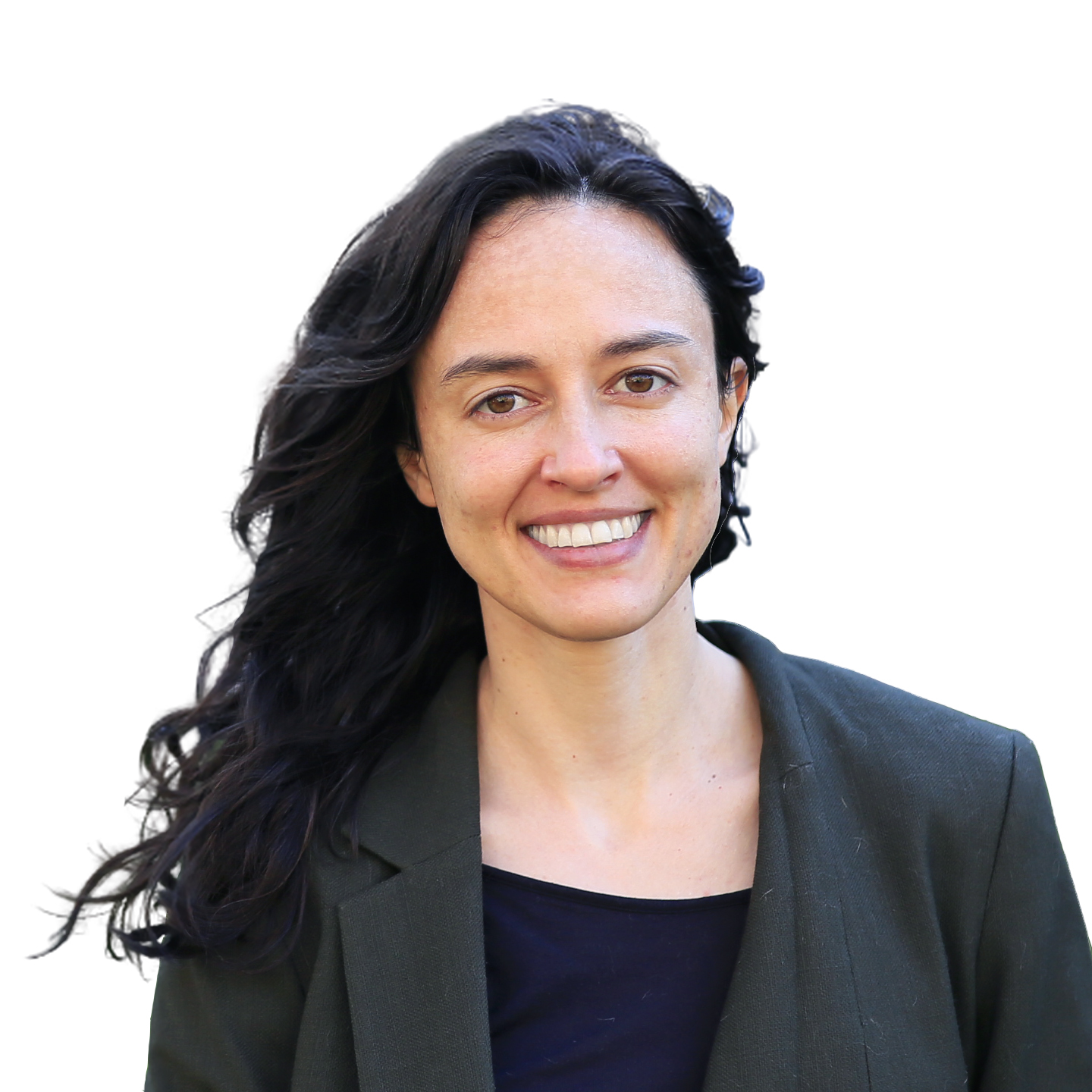
Nell Williams
Education Finance SME
Nell worked as a middle school Science teacher for 6 years before enrolling as a doctoral student in Education Policy at the University of Pennsylvania, where she studies education finance and resource equity. At Allovue, she creates research-informed content highlighting current issues in education finance.

Zae Soe
Brand Designer
Zagawah “Zae” Soe is the Brand Designer at Allovue, supporting all aspects of our visual identity. Her web design, illustration, and infographics supplement our content by visualizing data and key concepts. She holds a dual BFA in Graphic Design and Humanistic Studies from the Maryland Institute College of Art.